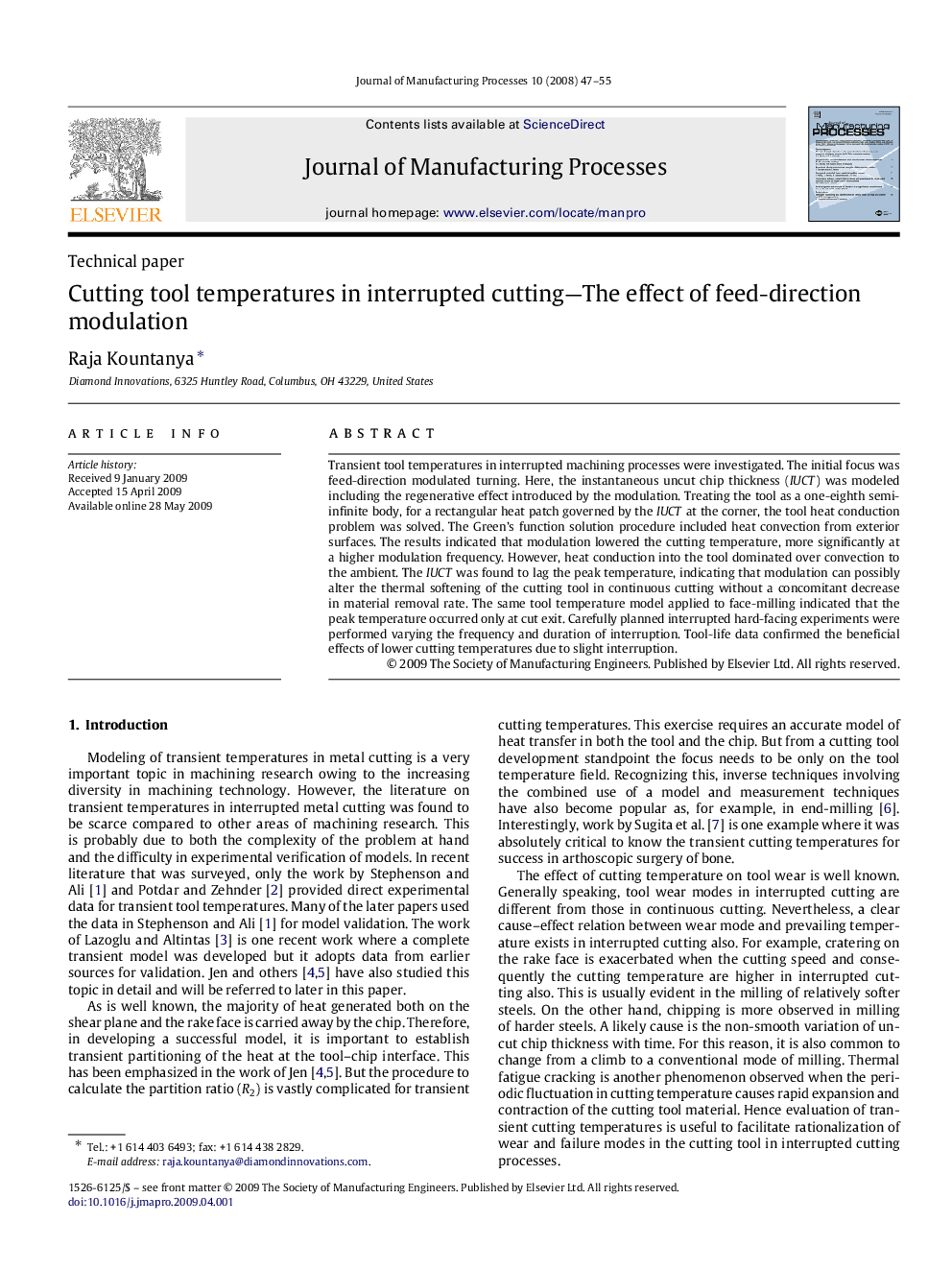| Article ID | Journal | Published Year | Pages | File Type |
|---|---|---|---|---|
| 1697296 | Journal of Manufacturing Processes | 2008 | 9 Pages |
Transient tool temperatures in interrupted machining processes were investigated. The initial focus was feed-direction modulated turning. Here, the instantaneous uncut chip thickness (IUCT) was modeled including the regenerative effect introduced by the modulation. Treating the tool as a one-eighth semi-infinite body, for a rectangular heat patch governed by the IUCT at the corner, the tool heat conduction problem was solved. The Green’s function solution procedure included heat convection from exterior surfaces. The results indicated that modulation lowered the cutting temperature, more significantly at a higher modulation frequency. However, heat conduction into the tool dominated over convection to the ambient. The IUCT was found to lag the peak temperature, indicating that modulation can possibly alter the thermal softening of the cutting tool in continuous cutting without a concomitant decrease in material removal rate. The same tool temperature model applied to face-milling indicated that the peak temperature occurred only at cut exit. Carefully planned interrupted hard-facing experiments were performed varying the frequency and duration of interruption. Tool-life data confirmed the beneficial effects of lower cutting temperatures due to slight interruption.
